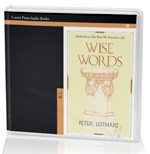In Colossians, Paul seems to have much of the Exodus imagery in mind.
He goes in Col. 1 from speaking about being "delivered from the powers of darkness and transfered into the kingdom of the Son" to "redemption in His blood" to Jesus as the "firstborn from the dead" (tenth plague) to chapter 2 warning against philosophy, traditions of men, and "the basic principles of the world" saying that we are "complete in Him, who is the head of all principality and power" (2:10).
If Paul is thinking of the Exodus here then the principalities and powers are the Egyptian gods that the Israelites were worshiping or at least syncretistically worshiping alongside of Yahweh. And in the first century this would seem to be some kind of syncretism with Hellenistic religion and unbelieving Judaism.
But this reading also makes sense of why Paul immediately describes our union with Christ as a "circumcision": In Him you were also circumcised with the circumcision made without hands, by the putting off of the body of the sins of the flesh by the circumcision of Christ (2:11).
If Passover is a corporate circumcision of Israel, then the death of Christ, the true passover lamb more so. In the Cross (the great Passover), Christ was struck like the firstborn of Egypt, the death we rightly deserved in order to tear us out of Egypt (our trespasses, 2:13). But when Christ was struck He disarmed the principalities and powers (the gods of Egypt) and revealed them as powerless and empty and revealed simultaneously, that God rules all of creation. And He did this centrally in rising from the dead.
This is why there is now no longer "Greek or Jew, circumcised or uncircumcised, slave or free" (3:11) -- the Cross was the final Passover in which the great "mixed multitude" was reconciled to God and to one another. All have already been circumcised in the blood of the Lamb.
And more generally, it seems like the whole epistle follows the Exodus pattern from the house of bondage to the house of God, with the circumcision of Christ (Passover) at the center.
Wednesday, October 27, 2010
Exodus and the Circumcision of Christ
Posted by Toby at 6:39 AM
Labels: Bible - Colossians, Bible - Exodus
Subscribe to:
Post Comments (Atom)

























No comments:
Post a Comment